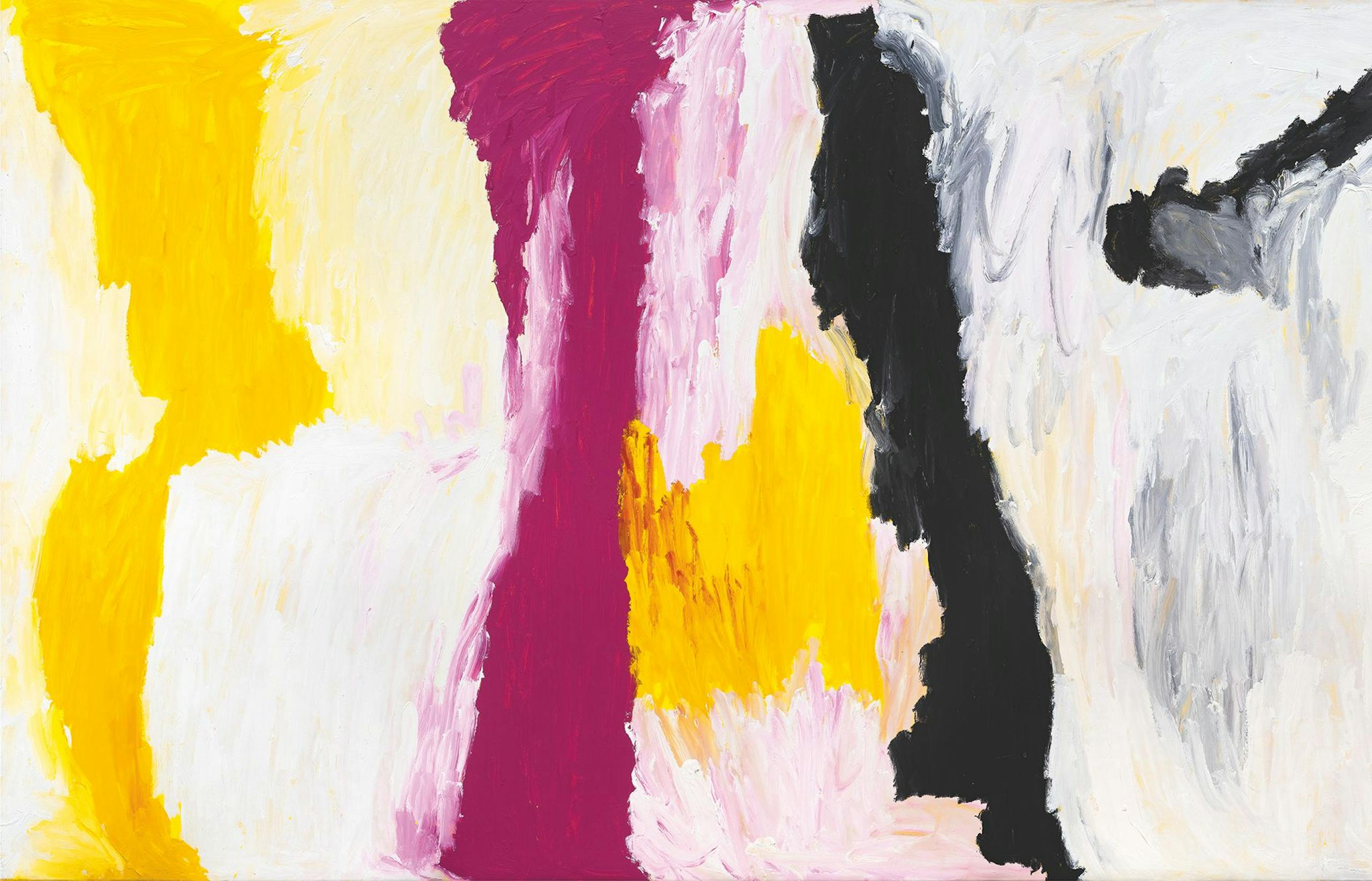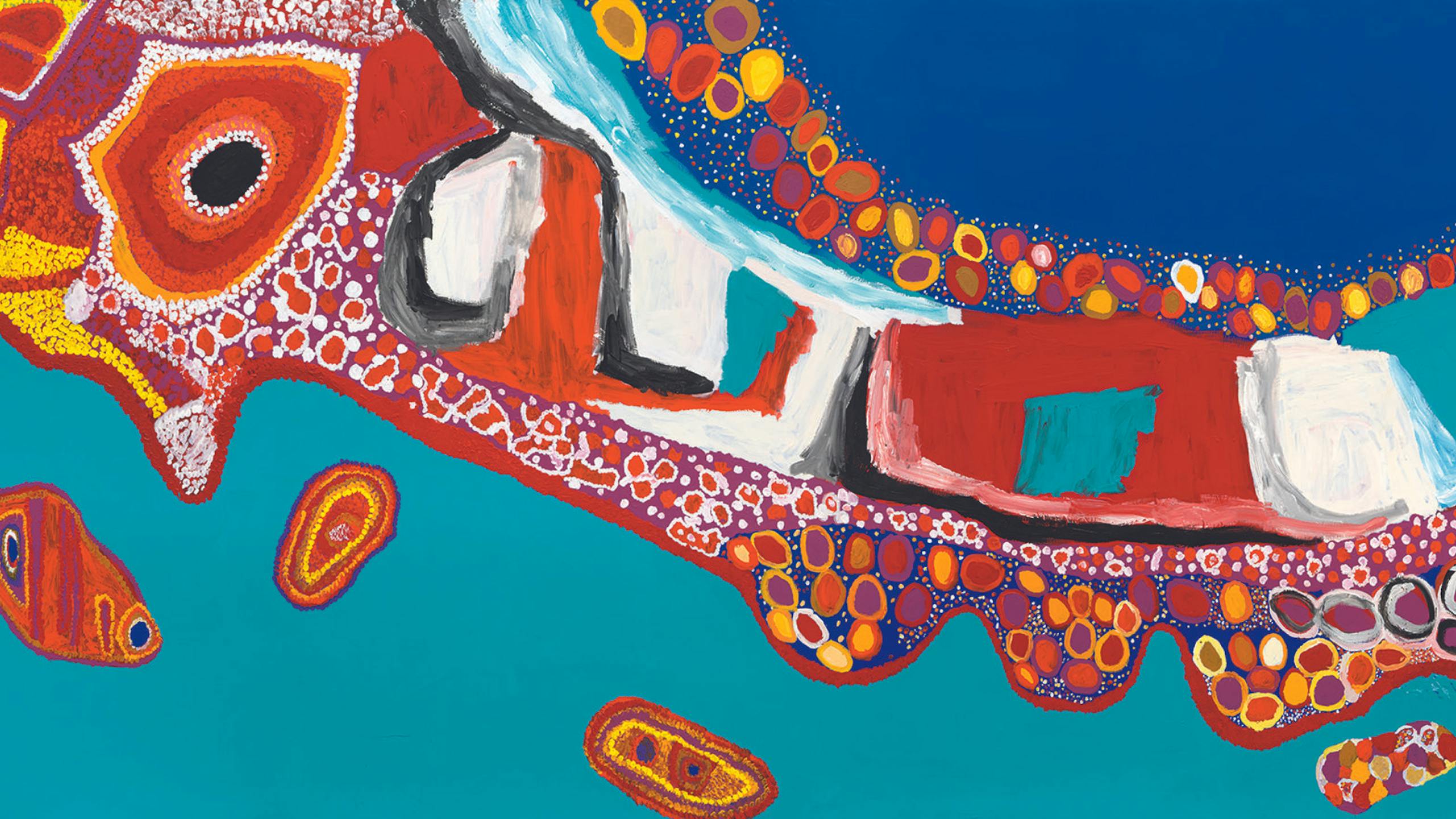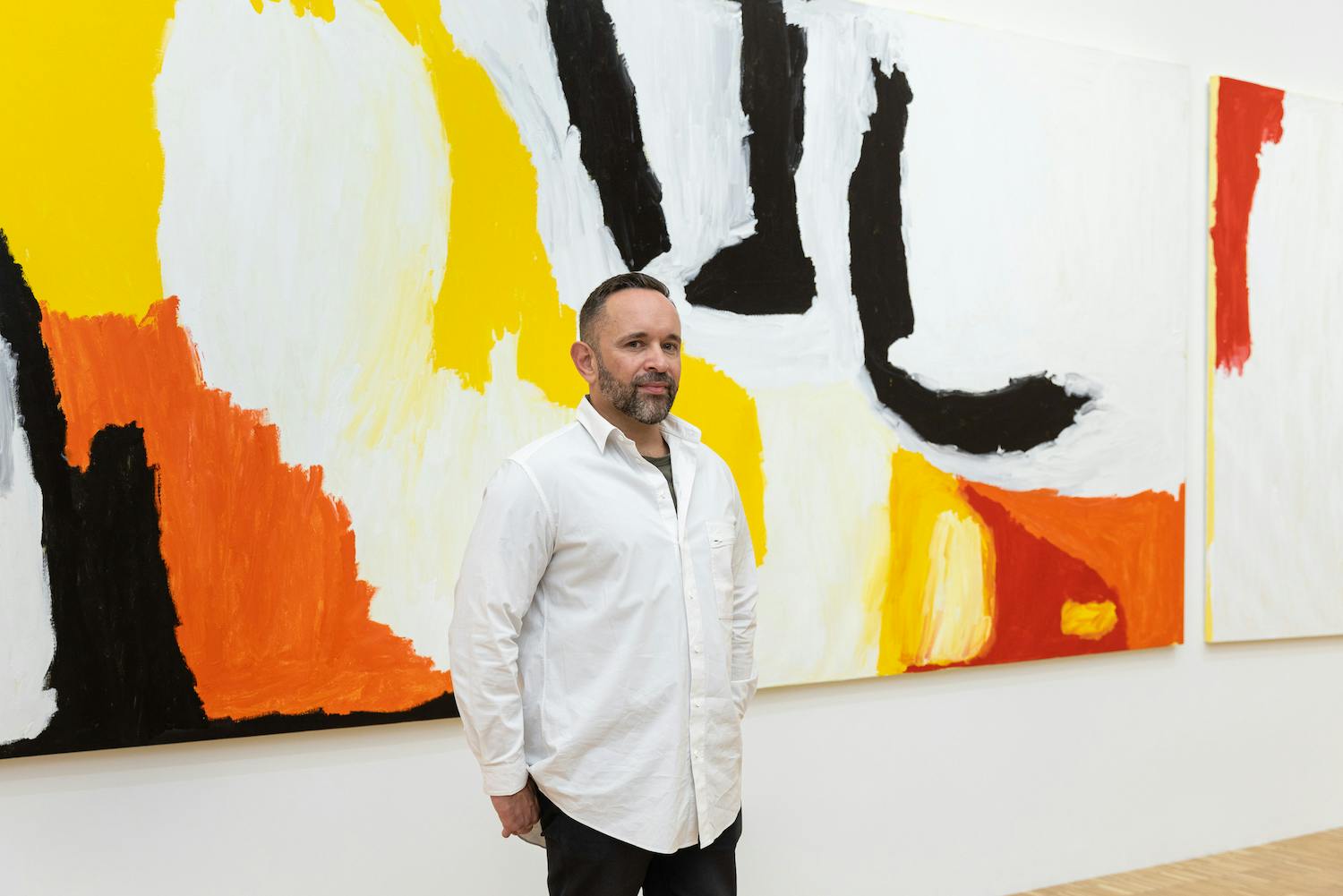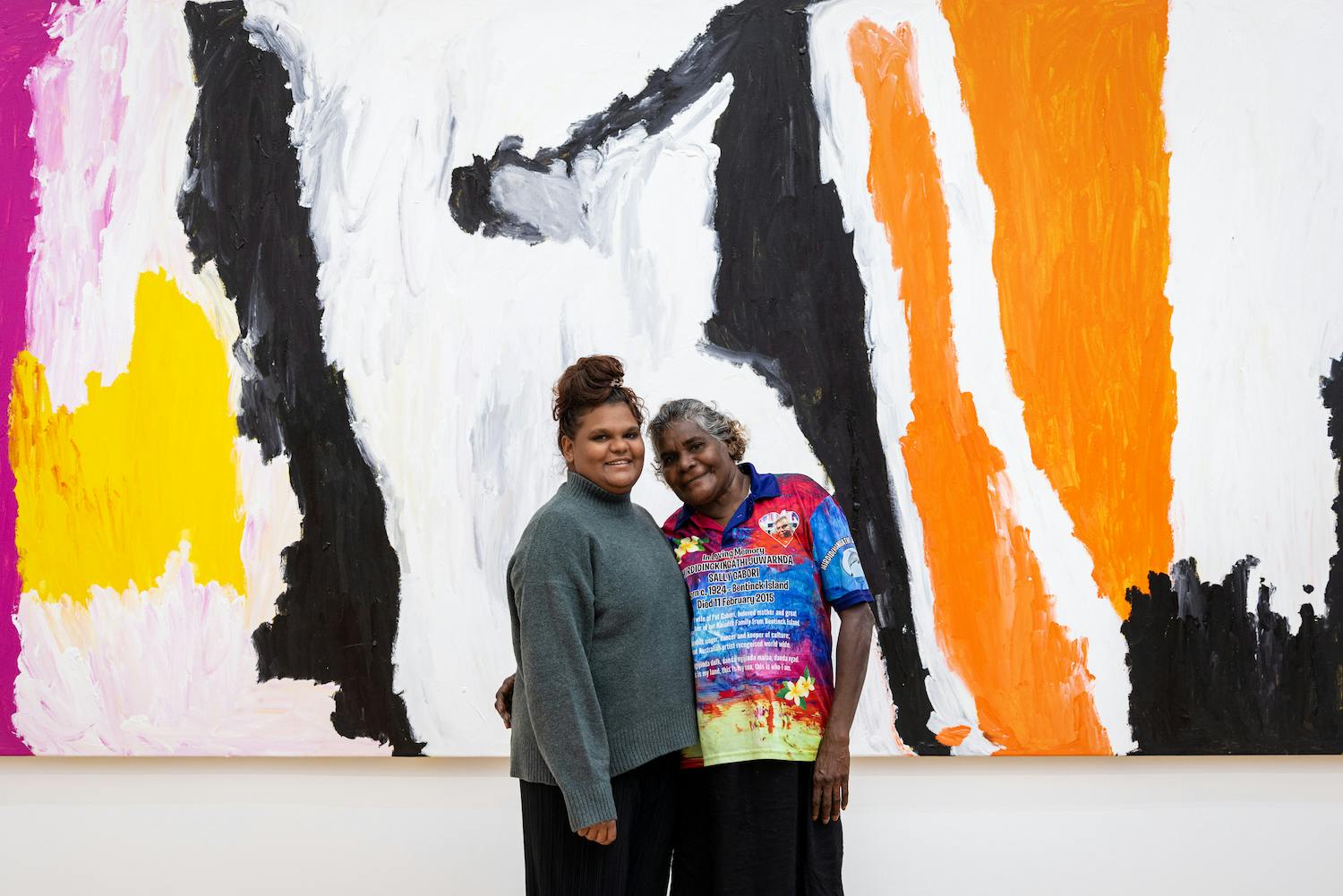

Sally Gabori, Sweers Island, 2008, © The Estate of Sally Gabori
Sally Gabori: When You Start Painting in Your 80s
On the occasion of the exhibition dedicated to Sally Gabori, Amanda Gabori Dibirdibi and Tori Juwarnda Wilson (respectively Sally Gabori’s daughter and great-granddaughter), and Bruce Johnson McLean (Barbara Jean Humphreys Assistant Director, First Nations and Head Curator, First Nations Art, National Gallery of Australia, Sally Gabori specialist) reveal their point of view and their relationship with the artist's work.

Bruce Johnson McLean, photo by Gianluca Di Ioia, © The Estate of Sally Gabori
Bruce, how did you first come across Sally Gabori’s work? Can you tell us more about where and when you first curated an exhibition of her work in Australia?
Bruce: I first encountered Sally’s work through a local art gallery, Woolloongabba Art Gallery, when their curator called and said they had been working with a new artist and I had to go and view the works. They had assembled a gallery full of works made by Sally, an 81-year-old woman from the most remote part of the country, in just a few short months and held her first show in December that year. In 2006, I was the curator of an Emerging Indigenous Art Award at the Queensland Art Gallery where Sally was included with a group of her works. It is rare for anyone who has only picked up a paintbrush 13 months before to be exhibited at a major art museum, but Sally’s works were immediately compelling. In 2016 I was lucky enough to curate the first major museum retrospective of Sally’s work at QAGOMA.

Mirdidingkingathi Juwarnda Sally Gabori, installation view, Triennale Milano, 2023, photo by Gianluca Di Ioia, © The Estate of Sally Gabori
How important is Sally Gabori in the short history of Australian Aboriginal art recognition and in the current developments of the curatorial and institutional context?
Bruce: Sally Gabori’s painting is exceptional, created from her own mind rather than an Aboriginal tradition; unlike any other cultural group in Australia her Kaiadilt family had no tradition of making art or designs of any sort. Her paintings speak to the same themes and cultural concepts as most Aboriginal art, but also relate to more universal ideas of love, loss, longing and holding onto your own special place in the world. I believe it is the dichotomy of the abstractness and familiarity of Sally’s painting and her story that have captured the attention of so many around the world. Sally’s work has broadened the understanding of Aboriginal art, making her one of the most important artists of the contemporary Aboriginal art movements.
Her paintings relate to universal ideas of love, loss, longing and holding onto your own special place in the world.
Tori, Amanda, how do you remember Sally as a mother and great-grand mother?
Tori: She was always happy, so excited to see her grandchildren and great-grandchildren when she visited the art centre. She was telling stories, singing in the Kaiadilt way, keeping us connected to our home on Bentinck Island. She was a loving, caring, strong; a powerful woman – her family has always been her first priority.
Amanda: She used to sing around us when we were with her in the art centre painting – it was really amazing to paint with Mum.
How do you perceive the land in her paintings?
Tori: Through her paintings, she always made our home country closer, Bentinck Island, to the Kaiadilt family – seeing and feeling the land in her paintings makes me feel connected to my Kaiadilt home.

Amanda Gabori Dibirdibi and Tori Juwarnda Wilson, photo by Gianluca Di Ioia, © The Estate of Sally Gabori
What does it mean to you to be Kaiadilt?
Tori: For me, being a Kaiadilt woman makes me feel powerful and connected to my Country; it gives me the right to go back to Bentinck Island to hunt and fish, to live off the sea and the land.
Painting helps me feel connected to my Kaiadilt home and very close to my family.
Amanda, could you tell us about when you started painting with you mother? What did she teach you?
Amanda: It was really amazing to work with my mother – she gave us confidence in painting.
Do you still paint?
Amanda: Yes, I am an artist too – one of the paintings that I did with my Mum and my sister Elsie is in this exhibition in Milan. Painting our country on Bentinck Island helps me feel connected to my Kaiadilt home and very close to my family.
Related events
